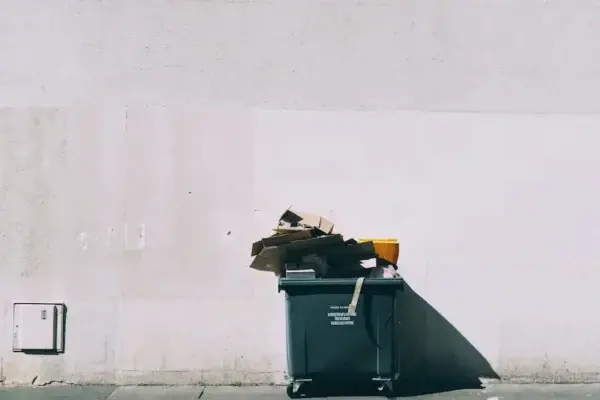Commercial and industrial facilities of different sizes produce significant amounts of waste every day. Monitoring the waste volume and establishing a matching system for trash collection is not the priority for most organizations.
However, facility managers and business owners should consider efficient waste management systems as it brings more benefits than expected, particularly in times when sustainability plays a key role in protecting the environment and helps to build a proactive reputation of businesses.
Waste management cost
The manufacturing, construction, agriculture and many others industries show a trend of producing higher volumes of waste each year, hence a growing waste management cost. The bigger the container and the more frequently they are picked up also results in higher charges from waste haulers. No control over produced waste and its current way of collection leads to 50% higher costs than with need-based pick-ups and source reduction.
Multi-location businesses, restaurants, hotels and other facilities expose themselves to additional costs by using traditional fixed collection schedules. On a fixed collection schedule, waste haulers pick up the containers regardless of their fill-level. This often leads to the organization being charged for a collection of bins that are only half full, or being charged extra for overflowing containers.
Solutions to reduce waste management costs
You are most likely looking for possibilities to cut costs in your organization and at the same time trying to maximise efficiency of resources. That’s why you should pay more attention to waste monitoring and management. An innovative approach to the topic will help you establish a cost reducing waste management program for your business.
#1 Build a team for source reduction
It’s proven that source reduction brings a positive effect on the cost of waste management. A case study of Itasca Medical Center shows that the facility saves more than $11,000 each year on waste costs. Also, Itasca County Courthouse saves $42,000 thanks to source reduction.
To implement the changes within your organization you should consider forming a team which will consist of representatives from each department, who will be responsible for source reduction.
Brainstorming sessions will help to come up with ideas on how each department can reduce the produced waste volume and create a plan to be followed by the rest of the employees.
#2 Enhance 3 R’s of waste hierarchy – reduce, reuse, recycle
You can modify the system of waste production by implementing the rules of using a limited amount of resources or excluding disposable products. For example, encourage employees to only print necessary documents and get rid of plastic cups for water or coffee.
Embrace the circular economy. This involves reusing available materials instead of purchasing new ones, repairing broken equipment or trying to give them another meaningful purpose.
Implement a recycling system within your organization. Basic segregation for different waste fractions will reduce the collection expenses. Furthermore, restaurants, hotels, and other facilities producing food waste can donate unspoiled meals to homeless shelters.
#3 Choose adequate materials
The manufacturing and packaging of products produces the largest volume of waste within organizations. It is therefore important to consider waste management as part of the materials management plan. This allows organizations to choose materials based on their reusability and recycling opportunities.
How will that help to reduce costs?
– You can sell reusable materials to other companies or buy reused materials for lower prices
– Realising that you can reuse the materials will decrease waste production which results in lower collection expenses
– Recycling is rewarded by most of the waste haulers through the offering of lower rates
#4 Data collection and waste monitoring
Implementing the plan may be the easiest part of reducing the cost of waste management. The biggest challenge comes when you have to collect data and measure the result of the project. How will you monitor the waste volume frequently without additional personnel?
WasteHero offers a smart bin sensor that measures the fill-level of containers and collects data for an algorithm, which then predicts when the bin should be picked up. It gives your organization the possibility to implement dynamic need-based waste collection. Fewer emptyings and avoiding overflowing bins will reduce your costs.
The analytics dashboard brings the possibility to recognize locations that generate the most waste, identify the most problematic departments, and measure the progress of implemented changes.
Interested to learn more about how to get started with smart waste management? Contact a WasteHero specialist today!
1. Municipal waste, Generation and Treatment
2. Waste Prevention: Source reduction now, Kenneth Brown
3. Managing and Reducing Wastes: A Guide for Commercial Buildings | US EPA




